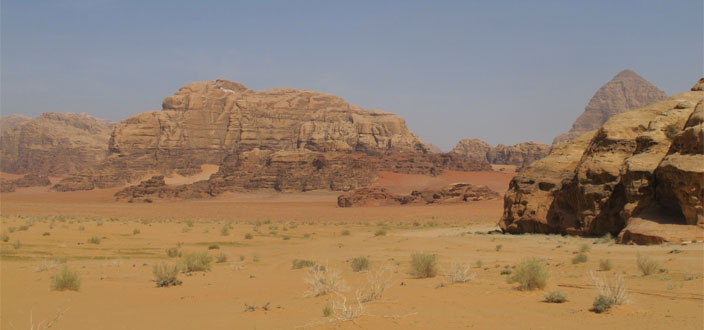This is the second blog in a series of three, which explore issues of energy in Jordan, Israel and Palestine. This entry was written by Shannon McGowan, FoEME intern at the Amman Office and studies International Environmental Policy at the Monterey Institute of International Studies.
Jordan faces multiple challenges within the energy sector, including increasing demand, energy costs, and dependency on foreign fossil fuel. Underlying these problems is the country’s lack of conventional energy resources and water scarcity. Currently, 96% of Jordan’s energy is imported, with the country spending roughly one-fifth of its GDP on energy imports. The country’s energy strategyfor 2007-2020 reflects the need to reduce energy imports and increase national energy production, with a goal to reduce imported energy to 61% by 2020.

Jordan is exploring self-sustaining alternatives such as renewable energy sources or nuclear energy. Natural gas has been suggested as a short-term solution, but recent attacks on the Egyptian natural gas pipeline highlight the unreliability of such a source.
With 2% of the world’s uranium resources, Jordan’s government plans to generate 60% of the nation’s total energy from nuclear sources by 2035. In the works are plans to build four reactors, the first to be operational as soon as 2020.
Lately, the prospect of nuclear energy in Jordan has been stirring up a lot of debate, especially in light of the Fukushima incident in Japan. A newly formed Greenpeace Jordan group has led campaigns against nuclear energy, claiming it is “dirty, unsafe and a security threat.” Instead, the campaigners suggest renewable energy as an alternative to nuclear, though currently less than 1% of Jordan’s energy is generated from renewable sources.
As in Israel and Palestine, it’s not likely that the sun will stop shining in Jordan. Researchers have highlighted the country’s vast potential for renewable energy, especially solar. It has even been speculated that Jordan’s theoretical potential to benefit from wind and solar energy is greater than that of the US, the UK, France, China, and Russia combined. A prospective wind farm project slated for southern Jordan is currently awaiting bids from eight international firms. If carried out, this would become the nation’s largest renewable energy source. Should Jordan build a solid market for renewable energy, it would be a great economic opportunity in addition to strengthening their energy security.
It is hard to tell how seriously the Jordanian government is considering these renewable sources in contrast to the seemingly more preferred nuclear option. However, the global community has been less than enthusiastic about the proliferation of nuclear energy. With Germany scheduled to shut down all nuclear reactors by 2022, it would be wise for Jordan to contemplate other energy sources before turning to nuclear.
To read Exploring Energy in Jordan, Israel and Palestine: Part 1, click here.